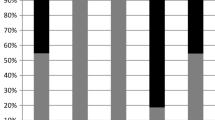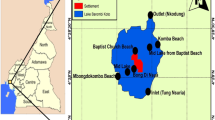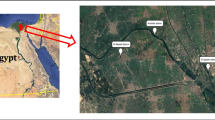Abstract
Sediment ingestion has been identified as an important exposure route for toxicants in waterfowl. The toxicity of lead-contaminated sediment from the Coeur d'Alene River Basin (CDARB) in Idaho was examined on posthatching development of mallard (Anas platyrhynchos) ducklings for 6 weeks. Day-old ducklings received either untreated control diet, clean sediment (24%) supplemented control diet, CDARB sediment (3,449 μg/g lead) supplemented diets at 12% or 24%, or a positive control diet containing lead acetate equivalent to that found in 24% CDARB. The 12% CDARB diet resulted in a geometric mean blood lead concentration of 1.41 ppm (WW) with over 90% depression of red blood cell ALAD activity and over threefold elevation of free erythrocyte protoporphyrin concentration. The 24% CDARB diet resulted in blood lead of 2.56 ppm with over sixfold elevation of protoporphyrin and lower brain weight. In this group the liver lead concentration was 7.92 ppm (WW), and there was a 40% increase in hepatic reduced glutathione concentration. The kidney lead concentration in this group was 7.97 ppm, and acid-fast inclusion bodies were present in the kidneys of four of nine ducklings. The lead acetate positive control group was more adversely affected in most respects than the 24% CDARB group. With a less optimal diet (mixture of two thirds corn and one third standard diet), CDARB sediment was more toxic; blood lead levels were higher, body growth and liver biochemistry (TBARS) were more affected, and prevalence of acid-fast inclusion bodies increased. Lead from CDARB sediment accumulated more readily in duckling blood and liver than reported in goslings, but at given concentrations was generally less toxic to ducklings. Many of these effects are similar to ones reported in wild mallards and geese within the CDARB.
Similar content being viewed by others
Author information
Authors and Affiliations
Additional information
Received: 2 September 1999/Accepted: 10 February 2000
Rights and permissions
About this article
Cite this article
Hoffman, D., Heinz, G., Sileo, L. et al. Developmental Toxicity of Lead-Contaminated Sediment to Mallard Ducklings. Arch. Environ. Contam. Toxicol. 39, 221–232 (2000). https://doi.org/10.1007/s002440010099
Issue Date:
DOI: https://doi.org/10.1007/s002440010099




